Shattered existence | JUNE 26
The first major rupture in artist Gustav Wolf’s biography had occurred during World War I. He had volunteered for frontline duty and was badly injured. His brother Willy was killed in combat. The works in which he processed his wartime experiences leave no doubt about his feelings. Instead of glorifying war, he shows its horrors. His confrontation with antisemitism during and after the war led him to an increased awareness of his own Jewishness. In 1920 he accepted a professorship at the Baden Art School in Karlsruhe, trying to realize his ideal of an equitable partnership between teacher and student. After a year, he quit this “dead activity,” referring to the school as “an academy of schemers.” In 1929, he designed the set for Fritz Lang’s silent film “Woman in the Moon,” an early science-fiction movie. Upon the Nazi rise to power in 1933, he canceled his memberships with all the artists’ associations to which he had belonged. In his letter to the Baden Secession, he explained his decision with the following words: “I must first get my bearings again. The foundations of my existence have been called into question and shaken.” After extended stays in Switzerland, Italy and Greece, he returned to Germany in 1937. In February 1938, he boarded a ship to New York. June 26, 1938 was his 49th birthday.
Liver dumplings, Christmas stollen, matzo balls | JUNE 25
In Anni Buff’s personal recipe book, dated June 25, 1938, traditional Bavarian dishes, like liver dumplings, Christmas stollen, and cottage cheese doughnuts, certainly outweighed traditional Jewish ones, such as matzo balls. The Jewish community in her native Krumbach was well integrated. Since its peak in the early 19th century, when it constituted about 46% of the population, its ranks had declined considerably, and by 1933, only 1,5% of Krumbachers were Jewish. In spite of this negligible presence of Jews, National Socialism with its rabidly antisemitic message took hold fast, and even before it became national policy, Jews in the little town were harassed by SA men. By 1938, the abuse had become so unbearable that Anni’s father Julius, who dealt in upholstery material, began to explore possibilities to find a new home on safer shores, such as the US, the Dominican Republic, or Shanghai. Not even the fact that he had lost a brother in WWI and had himself served in the 16. Bavarian Reserve Infantry Regiment—along with a young Austrian named Adolf Hitler—did anything to improve his standing with Nazi authorities.
Skills training for Palestine | JUNE 24
When the Halutz (Pioneer) Movement first began to establish itself in Germany in the 1920s, it had a hard time gaining traction among the country’s mostly assimilated Jews, who saw themselves as “German citizens of Jewish faith.” The Movement, which aimed to prepare young Jews for life in Palestine by teaching the Hebrew language as well as agricultural and artisanal skills, got its first boost during the Great Depression (from 1929), which made emigration more attractive as an opportunity for economic improvement. But even more significant growth took place after the Nazis’ rise to power: so-called “Hachscharot” sprung up all over Germany, instilling young Jews with a meaningful Jewish identity and imparting valuable skills. The photo presented here shows graduates of the Jewish Professional School for Seamstresses on Heimhuderstraße.
Interview at the US-Consulate | JUNE 23
After his first official attempt to immigrate had failed under adventurous circumstances, 20 year-old Heinz Ries of Berlin made another effort to get permission to live in the US permanently and legally. For months, he had struggled in the shadows as an undocumented immigrant in New York. After obtaining an affidavit of support, Ries traveled to Havana and visited the US consulate there on June 23, 1938. Finally, he was admitted legal entry into the United States. After the war he returned to Germany for some time, first in the employment of the Allies, then as a photo journalist for the New York Times. The photographs of the Berlin Blockade and the Airlift, taken during these years, made him world-famous under the name Henry Ries.
Billy Wilder | JUNE 22
Samuel (later “Billy”) Wilder had a mind of his own: born in 1906 into an Austrian-Jewish family in the Galician town of Sucha Beskidzka, then part of the Austro-Hungarian Empire, he was expected to join his father’s business, which consisted mainly of a chain of railroad restaurants. But after the Realgymnasium and a brief stint at law school in Vienna (he dropped out after three months), he decided to follow his true leanings. At the paper Die Stunde, a tabloid of questionable repute, he got his first shot at practicing his writing skills. In 1926, an opportunity arose for him to move to Berlin, where he freelanced for various tabloids and took up screenwriting. After the Nazis’ ascent to power, Wilder first moved to Paris and was given the opportunity to direct his first movie, Mauvaise graine. In 1934 he entered the US on a visitors visa. From 1936, he was under contract at Paramount Pictures. June 22, 1938 was his 32nd birthday – the sixth he celebrated in exile.
A weekly lifeline | JUNE 21
As the influx of refugees from Nazi Germany intensified, what had begun in 1934 as the anniversary brochure of the German Jewish Club in New York quickly turned into a professional publication and a lifeline for the uprooted. With its offer of a wide range of cultural and athletic activities, the monthly was an emotional anchor for the newcomers, but it also offered practical help getting settled in the new country. This issue of the Aufbau from June 1938 features a large number of rental ads, mostly for fully furnished rooms, often in the Washington Heights neighborhood of Northern Manhattan, thereby giving some extra income to the owners or main tenants while providing affordable housing to refugees who usually arrived with very little money and property.
The crowd looked on quietly | JUNE 20
Section 17 of the Third Supplementary Decree on the Reich Citizenship law (Reichsbürgergesetz), issued on June 14, called for marking Jewish businesses at a date yet to be determined. The Nazis lost no time. According to this article by the Jewish Telegraphic Agency, days later, the word “Jew” and Nazi slogans were smeared on Jewish shop windows throughout Berlin in an organized fashion, with the same red, hard-to-remove oil paint used everywhere. There could be no doubt that the action was carried out with blessings from above. While no opposition from the non-Jewish population is recorded, the correspondent does point out that unlike in Vienna and in less affluent parts of Berlin, the crowd on Kurfürstendamm looked on quietly, without major enthusiasm. Tension among Jews was intensified by reports of plans to build labor camps where Jews apprehended in recent raids were to be put to work.
A letter from Shanghai | JUNE 19
At a time when more and more German Jews became anxious to leave the country, this letter from a German-Jewish emigrant in Shanghai, addressed to the “gentlemen of the Hilfsverein [Aid Society of Jews in Germany]” and published in the “Jüdisches Gemeindeblatt für Berlin,” must have infused prospective emigrants with new hope: the writer exuberantly thanks the Hilfsverein for counseling him and gushes over the multitude of professional options available to immigrants at his new location, “provided, of course, that you have a skill and are able to work intensely.” According to him, musicians, physicians, and merchants are greatly in demand, and the situation is especially promising for secretaries and shorthand typists – on condition that they have perfect command of the English language, which could by no means be taken for granted among German Jews. The newcomers were not the only Jews in the country; a Sephardic community had been present in Shanghai since the middle of the 19th century, and settlement by Ashkenazi Jews had begun in the early 20th century and intensified in the wake of the Russian Revolution.
Planted evidence | JUNE 18
Since discussing the possibility of emigration with his relatives in Vienna on April 20, Adolph Markus of Linz had taken up English lessons at the synagogue twice to three times a week. On April 29, his brother-in-law had been picked up by the Gestapo, and the Markuses’ tension and nervousness was beginning to rub off on the children. Two weeks later, Mrs. Markus was questioned by the Gestapo about the value of a house she owned and all her other property. Finally, on June 18, two Gestapo officers appeared at the family’s home: While going over the contents of some boxes, one of them tried to frame Adolph Markus by sneaking in a communist leaflet. Markus mustered the calm and self-assurance to point out to the officers that he had never been politically active in any way. His allusion to his frontline service in World War I, combined with the remark that if they were to arrest him, they would have to take along his two little boys, since their mother was in the hospital, made them change their mind. They left – threatening to return after six weeks if he wasn’t going to leave the country on his own accord.
Fear of free thinkers | JUNE 17
On June 17, the Jewish Telegraphic Agency reports that in the last four days, the Nazi authorities have re-intensified their raids on cafés in Berlin and elsewhere in the country, which between June 13 and 17 have led to the arrests of 2,000 Jews. During the Weimar Republic, there had been a thriving Kaffeehauskultur—artists and intellectuals practically saw certain cafes as their homes, where they would spend half of their days and nights discussing art, literature, and politics. Under the Nazis, this phenomenon quickly disappeared; they suspected subversive activities among these free thinkers. The public sphere was infested with informers. By the time of the Juni-Aktion, in the context of which these raids were carried out, the original clientele had largely disappeared. Ostensibly, the raids were targeting “anti-social elements.” In fact, however, they constituted the first mass-arrest of Jews. The Minister of Propaganda, Joseph Gobbels, had summarized the intention with the pithy words: “Our password is chicanery, not the law.”
Clutching at straws | JUNE 16
Erika Langstein was a young English teacher living in Vienna. In June 1938, having experienced the persecution of Jews in the Austrian capital for several months already, Erika sent a letter to Donald Biever, an American citizen, imploring him to help her and her Jewish father flee Austria by issuing an affidavit for them. Nothing would be unusual about this, except for the fact that the young woman had met Biever just once, briefly, on a train ride a year earlier, and had not communicated with him since. Despite the tenuous nature of their relationship, Erika describes to Biever the hopeless of the situation in Vienna. She also attaches a photo, in case Biever does not remember their encounter.
Case by case | JUNE 15
Under the impact of the Nazi rise to power and increasing antisemitism in Europe, the great Yiddish writer and cultural activist Melekh Ravitch had had the foresight to raise the funds for a trip from his native Poland to Australia as soon as 1933 in order to scout the inhospitable Kimberley region as a possible place for Jewish settlement. His optimistic conclusion was that the challenges of the Outback could be tackled with “mer vaser, veyniker bir”—“more water, less beer.” By 1938, the territorialist Frayland Lige also began to look into the possibility. As per the Jewish Telegraphic Agency’s report on June 15, the government was willing to consider individual cases of Jews wishing to immigrate but was not willing to support Jewish mass settlement in the country.
Marked | JUNE 14
Despite the patriotism often espoused by German Jews and their manifold contributions to society, the Reichsbürgergesetz (“Reich Citizen Law”) of 1935 officially assigned an inferior status to Jews, declaring them to be mere “nationals” and further segregating them from the rest of the population. Over time, supplementary decrees were issued that provided the exact Nazi definition of what made a person a Jew and forced Jewish public servants into retirement. On June 14, 1938, the third such supplementary decree stipulated that Jewish-owned businesses were to be marked as such.
Fire sale | JUNE 13
The Jewish community of Eisenstadt in the Burgenland region of Austria had never been a large one, but as the oldest Jewish community in the area, it dated back to the 14th century and had a rich cultural life. The moment Austria was annexed by Nazi Germany on March 12, 1938, Jews were vulnerable. Under the deeply racist Gauleiter Tobias Portschy, the Burgenland was the first part of Austria to expel its Jewish population. In June 1938, Hilde Schlesinger Schiff was in Eisenstadt helping her parents get ready to relocate. In a birthday letter to her daughter Elisabeth, Hilde calls Elisabeth “a true Jewish child, not settled, always ready to be on the move,” in contrast with her own emotional connectedness to Eisenstadt, from which she is now forced to uproot herself. Mrs. Schlesinger Schiff writes that she hopes her parents will soon be allowed to immigrate to Czechoslovakia, but bureaucratic hurdles remain. Meanwhile, she is clearly taken aback by the eagerness of non-Jews to snatch up the family’s property at a low price, calling it “grave robbery.”
Anne knows better | JUNE 12
Leaving behind an increasingly antisemitic Germany, the Frank family of Frankfurt am Main fled to the Netherlands shortly after the Nazis rose to power. They settled on Merwedeplein in Amsterdam’s River Quarter, where more and more German-speaking immigrants were finding refuge. So large was the influx of Jews that some in the Dutch Jewish community were worried it would affect their standing in society and cause antisemitism. The Franks’ older daughter, Margot, went to school on Jekerstraat. Anne attended the Sixth Montessori School, a mere 5 minutes away from the family home. Fifteen of her classmates were Jewish. She loved telling and writing stories. Anne was curious, demanding, interested and very articulate. As her good friend Hanneli Goslar’s mother would say, “God knows everything, but Anne knows better.” In 1938, Anne’s father, Otto, applied for immigration visas to the United States. June 12 was her 9th birthday.
An absurd privilege | JUNE 11
The family of Therese Wiedmann (née Toffler) in Vienna was secular and very well integrated. While the Tofflers were keenly aware of the situation in Germany, no one among Therese’s relatives foresaw that so many Austrians would be so quick to welcome Hitler and abandon Austrian independence. After the “Anschluss” in March 1938 she immediately lost her job with Tiller AG. Her grandfather, until recently the president of the company, was no longer permitted to enter his office. Her father, Emil, the executive manager, was kept around for the time being, in order to familiarize the new, “Aryan” management with the company’s operations. Luckily, he had transferred part of his assets to England before the “Anschluss.” In better days, the company was deemed sufficiently Austrian to be appointed a purveyor to the royal-imperial court, for which it produced army uniforms. This passport, issued to Therese Wiedmann on June 11, 1938, contains a visa that includes “all countries of the earth” and “return to the German Reich.”
Stölpchensee | JUNE 9
In 1935, the Nazi party press had orchestrated a campaign to exclude Jews from public swimming pools, citing “unpleasant incidents” or warning the public of the “danger” allegedly posed by Jews. Suddenly, signs inscribed with texts like “Jews are not permitted access to this facility” were put up almost everywhere. Stölpchensee, one of the lakes just outside Berlin, was the last public bathing spot to which Berlin Jews had access. Fritz and Friedel F. were married and lived in Berlin, where Fritz owned a lamp store. In June of 1938, their weekend cottage at Stölpchensee was still a family escape from the city and harassment.
You never write, you never call… | JUNE 8
Hans Joseph Pinkus was a direct descendant of Samuel Fränkel, founder of a textile factory in Neustadt (Upper Silesia), which for a while was the primary employer in the entire region and one of the world’s foremost producers of linens. His grandfather, Max, had been a personal friend and patron of the Nobel Prize-winning author Gerhart Hauptmann. His great-uncle, the scientist Paul Ehrlich, had been a Nobel laureate, too. Lili, Hans Joseph’s stepmother, was hardly intimidated by this pedigree. In this letter, written on June 8, 1938, she gives him a major dressing down for having neglected his correspondence with his parents and sternly inquires whether he flunked his exam in the Czech language. At this point, 16 year-old “Pipo,” as the family called him, was staying with his step-grandmother in Brünn (Brno, Czechoslovakia) and attending school there. His parents and half-sisters lived in Neustadt: the directorship of the the S. Fränkel company had been handed down to male members of the Pinkus family for several generations and was now held by his father, Hans Hubert.
Unbearable despair | JUNE 7
The Anschluss, Austria’s annexation by Nazi Germany in March 1938, precipitated a wave of anti-Jewish violence. Emboldened by their new status and by the utter defenselessness of the Jewish population, Nazis and their sympathizers entered Jewish homes and seized whatever property they liked. Jewish-run businesses were ransacked or destroyed, and Jews of all ages were forced to carry out the demeaning task of scrubbing streets to remove political slogans under the eyes of jeering onlookers. With no protection to be expected from police, a feeling of utter abandonment and hopelessness drove many Jews to take their own lives. In the first two months after the Anschluss, 218 Jews escaped the state-sanctioned cruelty by taking their own lives. The JTA’s June 7 dispatch lists the most recent suicides—including that of a family of four—and deaths at the Dachau concentration camp.
Universal humanity | JUNE 6
In his “Remarks about the Feast of Weeks,” published in the June issue of the “Jewish Community Paper for the Rhenish Palatinate Region,” Rabbi Dr. Ernst Steckelmacher of Ludwigshafen poses a real challenge to his readers. He interprets the Book of Ruth, one of the readings during the Feast of Weeks, as an example of Judaism’s emphasis on the precedence of the universal over the particular. Through Ruth, who embodies universal humanity, the book shows that goodness can be found anywhere. This was not an intuitive message at a time when the ostracism of Jews from German society forced them to turn inward. June 6, 1938, was not only the second day of Shavuot, but also the 80th birthday of Claude G. Montefiore, the President of the World Union of Progressive Judaism. Dr. Steckelmacher acknowledges this occasion and reinforces his universalist message by drawing attention to the similar sentiments of Claude Montefiore.
Jewish schools | JUNE 5
For many Jewish children, going to public school turned into hell under the Nazis. Just getting there could mean running a gauntlet of anti-Jewish slights. At school, exclusion by fellow students and teachers was the rule. In order to spare their children this ordeal, parents who could afford it sent their children to Jewish schools. Before 1933, most assimilated German Jews attended public schools. However, in the hostile climate of the Nazi regime attendance at Jewish schools grew. Dr. Elieser L. Ehrmann, a pedagogue and employee of the school department of the Reich Representation of Jews in Germany had developed curricula for teachers at Jewish schools which aimed to deepen the knowledge of Jewish holidays and the customs accompanying them and thus instill a positive Jewish identity. The excerpt shown here is from Ehrmann’s “Curriculum for the Omer and Shavuot [Feast of Weeks],” published in 1938 by the Reich Representation of Jews in Germany. That year, the first day of Shavuot fell on June 5.
Lifesaver | JUNE 4
Close to 50 years before issuing an affidavit of support for his nephew, Karl Grosser, in Vienna, Frank W. Fenner had himself immigrated to the United States from Europe. A restaurant and confectionery owner in Mendon, Michigan, he pledged to support his young relative until the 26-year-old became financially independent. Finding a sponsor was a key prerequisite for obtaining an immigration visa that was often hard to fulfill. The visa process began by registering with the nearest US consulate, at which point a number on the waiting list was assigned. The length of the list depended on the number of Jews from a given country allowed to enter the US according to the quota system that had been in place since 1924. Despite the severe refugee crisis, quotas were not raised in 1938. During the waiting period, applicants had to procure all the required documents as well as certified copies. Prospective immigrants were lucky if their documents were still valid when their numbers came up.
Left in the dark | JUNE 3
Nobody saw fit to inform the worried wives of thousands of Jewish men arrested by the Nazis about their spouses’ whereabouts and the expected period of imprisonment. Many of them decided to go to the Rossauer Lände detention facility and the central police station in order to get information on the whereabouts of their loved ones. According to this June 3 report from the Jewish Telegraphic Agency, the detainees had been taken away in overcrowded railroad cars, many of them forced to remain in uncomfortable positions for up to five hours before departure. While there were intimations that those sent to the Dachau concentration camp in Germany would be exploited as construction workers in order to enlarge the camp and subsequently be released, many had no idea where their husbands were. The author of the report sees the “extraordinary callousness with which police have withheld information” as “one of the most terrifying aspects of the situation.”
No Jews allowed | JUNE 2
In 19th century, the Central Association of German Citizens of Jewish Faith began to publish lists of spas and hotels at which Jewish guests were not welcome. Some resorts even advertised themselves as judenfrei (“free of Jews”). After World War I, the phenomenon known as Bäder-Antisemitismus (“spa antisemitism”) increased, and with the Nazi rise to power in 1933, it became official policy. By 1935, Jews had been effectively banned from the Northern German bathing resorts, and from spas in the interior of the country by 1937. It was not until the Anschluss in March 1938 that Jews were pushed out of Austrian spas as well. Bad Ischl and other locations in the Salzkammergut region were particularly popular with Jews, to the point that in 1922, the Austrian-Jewish writer Hugo Bettauer quipped that “it caused a stir when people suspected of being Aryans showed up.” In a notice from June 2, The Jewish Telegraphic Agency reports that at the behest of the Nazi commissioner in charge, Jews were to be “segregated in Jewish hotels and pensions” and were no longer permitted to attend cultural events in Bad Ischl.
Gestapo in the house | JUNE 1
Her paintings were political accusations and constituted a threat to the Nazi regime. Lea Grundig, born in 1903 as Lina Langer, was arrested with her husband, Hans, by the Dresden Gestapo on June 1, 1938, and not for the first time. The explanation given on the form was “Suspicion of subversive activity.” What was meant was her art. With picture cycles like “Under the Swastika” or “It’s the Jew’s Fault,” Grundig, who since 1933 had been barred from her profession, hauntingly documented the brutality of the persecution of Jews and communists by the Nazis. In 1935, she gave one of her paintings the portentous title, “The Gestapo in the house.”
The Jewish Hospital in Hamburg | MAY 29
Depicted here is the facade of the Jewish Hospital in Hamburg. The photograph is part of an album preceded by the above inscription dated May 29, 1938. The hospital was endowed by merchant and banker Salomon Heine, also known as the “Rothschild of Hamburg,” in memory of his late wife Betty and inaugurated in 1843. The poet Heinrich Heine, Salomon’s nephew and beneficiary, honored the occasion with his poem Das neue israelitische Hospital zu Hamburg, in which he called it “A hospital for poor, sick Jews, for human beings who are thrice miserable, afflicted with three vicious ailments, with poverty, bodily pain, and Jewishness!” Even though the Nazi regime had been undermining the hospital’s finances since 1933, it had withstood these measures and was still able to take care of its patients in May 1938.
Conflict in Palestine | MAY 19
Nothing in this May 19 Jewish Telegraphic Agency report from its Jerusalem correspondent could provide German or Austrian Jews eager to leave for safer shores with the hope that life in Palestine would grant them peace and quiet. Between Arab attacks on Jewish workers or Jewish-built infrastructure and labor unrest among unemployed Jews, the only reassuring aspect of Palestine was its distance from the epicenter of Nazi activity. Since the beginning of the Great Revolt, Arabs, British, and Jews in Palestine had been embroiled in an often violent conflict—scarcely an attraction for weary Central-European Jews eager for peace.
Abortion and politics | MAY 9
On May 9, the Ärztegruppe of the German-Jewish Club (an informal association of physicians within the city’s main German émigré organization) in New York offered a lecture on the topic of abortion. During the Weimar Republic, repeated efforts had been made to abolish or at least reform the anti-abortion paragraph (§218). Its opponents pointed out that it put the working class at a disadvantage, since poverty was the chief motivation for abortion. In 1926, a member of the Reichstag representing a coalition of three right-wing parties, including the NSDAP, proposed legalizing abortion for Jews only. Under the Nazi regime, which promoted the production of “racially valuable” offspring, abortion was illegal unless it prevented the birth of children considered “undesirable.” In the US, the depression had led to an increased demand for abortion, and by the beginning of the 1930s hundreds of birth control clinics had sprung up. Poverty and the lack of access to qualified practitioners often led to the injury or death of pregnant women through self-induced miscarriage. The lecturer, Dr. Walter M. Fürst, was a recent arrival from Hamburg.
The best revenge | APRIL 29
A month and a half after the “Anschluss,” Paul Steiner is still incredulous. Everything seems so unbelievable, he writes in his diary, that “even ones own words are becoming astonishing and dubious.” He wonders what the outside world is doing for the Jews in light of German barbarity, especially for the Burgenland Jews, who were brutally expelled right after the “Anschluss” and ended up stranded in totally inadequate shelters while their belongings were appropriated by their former neighbors. Steiner also imagines the “revenge” that Jews will exact, shaming the world with their achievements once they are given the right to self-determination.
A letter from home | APRIL 19
For Arthur Wolf, a fervent Austrian patriot and veteran of WWI, the Nazi takeover of Austria in March meant the collapse of his world, the loss of his homeland and equal rights. Wolf was the manager of a textile factory in Tannwald (then Czechoslovakia). His Russian-born wife, Maria, had stayed behind in Austria with the couple’s son, Erich (b. 1923). Given recent events, the tone of Maria’s April 19 letter to Arthur is remarkably playful. She marvels about 15 year-old Erich’s poetry, speaks warmly about their mother-son relationship and expresses longing for Arthur, avoiding any obvious references to current events.
Carnival jesters at the passover ball | APRIL 9
Usually the Jewish National Workers Alliance, as the Labor Zionist fraternal order was known, occupied itself with serious matters. Among other things, it strove to strengthen the working class and offered help in cases of economic hardship, illness, or death of its members. In 1911, it had established the first modern insurance system for Jewish workers. On April 9, 1938 it strayed from its core mission and held a Passover Ball in the German-Jewish stronghold of Washington Heights in New York. Among other items, the program featured “Cologne humorists.” German immigrants would have understood that this referred to Cologne carnival jesting, a tradition associated with the Catholic carnival season that dates back to the Middle Ages. The venue was the ballroom of the Paramount Mansion, which also housed several institutions that promoted the interests of German Jewish immigrants.

